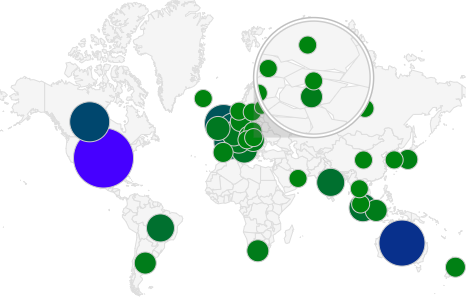
The basic way to write is like writing a personal school essay, where in you tell personal stories and relate it to your topic. This writing style is effective in telling opinions because you share ideas and then support it with useful information. This helps you create very informative write-up.
However academic style of essay writing is not always good for blogs. It is boring and does not help increase the readability of your work.
The study Not Quite the Average: An Empirical Study of Web Use, by Harald Weinreich and his group of researchers say that 49% out of more that 50,00 respondents read no more than 111 words of a content before getting out of a page. To help you make readable and effective contents, here are few tips that you should consider:
Start with a Catchy Title
The title is what readers see first when looking for something to read and so a catch title can attract readers to read your post. In previous years, many writers use attention grabbing words like “free” and “deal” to attract readers. But this has been associated to spam, so writers should be wise to not use it.
Writing the title is a challenge, for even the best writers. It must define the main idea of the write-up but must also attract people to read. Some blog writers start with the title first before they write, but it is advisable to write your essay or blog first before creating a title.
Open with an Interesting Lead
The lead opens the article. It must be interesting to attract readers to read on. There are many ways to write a lead, some of the often used leads are:
- Quotation lead – the writer starts with a saying or line from a famous person
- Standard lead – the writer opens up by stating the main idea
- Statistics lead – the writer shares a statistic and suspended-interest lead, the writer gives important information but also lure readers to read further.
You can be overly creative when writing your lead but you must remember that online readers have short attention span. Keep it simple. Sometimes, going direct to the point is enough to make them continue reading.
Share, Be an Informant
Blog should be informative. Such blogs are credible, and authoritative. A good way to make your blog informative is by researching first before writing. By researching, you gather relevant data and at the same time understand the topic better.
When you have personal opinion to say, always follow it up with a strong supporting data. You must also share your sources to add credibility.
Don’t Go For an Over-Kill
Jakob Nielsen, founder of “discount usability engineering” movement and an expert in eye tracking research and web layout errors, identified online readers as, “selfish, lazy, and ruthless.”
People who read online contents do not actually read everything. They have short attention span, so they only read parts of the content. Dont kill them with long articles and irrelevant words. If they get bored while reading, they move to a different page to read something else. This is why blog writers should create simple and short write ups. Nielsen added that good writers should cut 40% of a contents word, targeting least valuable data, while removing only 30% of the contents value.
Bullets and Subheadings are Your Best Tool
To keep contents short and simple, employ bullets, subheadings and other scannable texts. These texts highlight important words and ideas so that readers do not have to read the content word-by-word but still gets the whole point of the blog.
An inverted style of writing is perfect to let readers know the main topic even at the start of the content. In this style, writers begin with the most important information and write down towards the least important data. Cutting out adjectives, buzzwords and unsupported ideas also keeps the brevity of your articles.
The online community as Nielsen said, is lazy and demanding so writes must adjust for the readers. This is a challenge for writes for their skills and creativity will be tested, if they want to create an effective, readable and interesting content. Just remember, you write for your audience not for yourself.
Diana Walls is an Australia-born, California-based, freelance writer who works for au.essayontime.com. She enjoys reading books and watching movies. Learn more about her at her Google+.

It’s the content, or in other words the way that you use to build your web page, the article content is not easy to fit and all as the most basic factor to decide later.